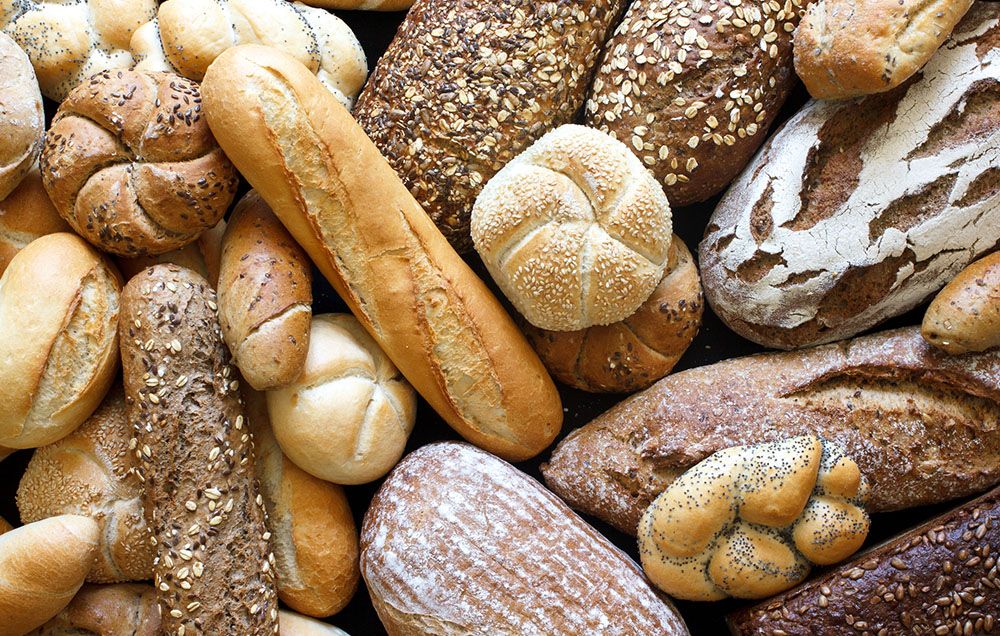Many diets are all about what you can’t eat in the name of weight loss (I’m looking at you, keto diet). But while they may work in the short-term, deprivation doesn’t necessarily lead to sustainable weight-loss results.
The macro diet is different. Instead of telling you what you can’t eat, it encourages you to count nutrients in order to help you make smart food choices for a more flexible approach to dieting. Nothing is considered off-limits, per se—you’re just looking to stock up on good foods so you get the nutrients you need.
Of course, it’s a little more complicated than that. Here’s what you need to know.
Okay, what exactly is the macro diet?
Macros, a.k.a. macronutrients, are the nutrients your body can’t live without: carbohydrates, protein, and fat. Each macro plays its own role—and each has its own weight-loss superpowers.
Macro #1: Carbs
Repeat after me: Carbs are not the enemy—even if you’re trying to lose weight. “Carbohydrates are the most important energy source for almost all human cells,” explains registered dietitian Mascha Davis, RDN, a spokesperson for the Academy of Nutrition and Dietetics.

Your body digests them quickly and turns them into sugar, or blood glucose, which you then store in your liver and muscles as glycogen. Together, blood glucose and glycogen fuel high-intensity exercise—the kind you need to burn fat and build metabolism-boosting muscle.
Carbs are also tied to your levels of the happy-maker neurotransmitter called serotonin (and, as a result, your mood).
Macro #2: Protein
You know that protein intake is used to build and maintain your body’s lean muscle, but it does a whole lot more than that. “Protein makes up the enzymes that power chemical reactions in the body,” Davis says. “It also makes the hemoglobin that transports oxygen through the body.” And if oxygen doesn’t get where it needs to go, you can forget about having the energy to take the stairs, let alone power through an hour-long run.

Plus, when it comes to boosting your satiety levels so that you can feel full on fewer calories, protein kills. (When you eat protein, your gut makes hormones that slow down the movement of food through your G.I. tract, meaning that you stay fuller, longer.) By slowing digestion, protein also slows the release of glucose into your blood stream to prevent the blood sugar and insulin spikes that can create health issues, explains Alexandra Sowa, MD, a New York City-based internal medicine physician and diplomate of the American Board of Obesity Medicine.
Macro #3: Fat
If the keto diet has taught us anything, it’s that fat does not make you fat—even if fat does contain more calories, ounce per ounce, than the other macros.
Here’s the thing: Fat makes up cell membranes, promotes nerve and brain health, and increases the absorption of the fat-soluble vitamins A, D, E, and K, all of which are crucial to healthy weight-loss efforts. And while fat doesn’t trigger the exact same satiety-boosting hormones that protein does, it is relatively slow to digest, further stabilizing blood sugar levels and keeping cravings away.
Okay, so how exactly do you count those macros?
 Jewelyn Butron
Jewelyn Butron
Everyone’s macro goals can vary slightly, but the National Academies of Sciences, Engineering, and Medicine says adults should try to get 45 to 65 percent of their calories from carbs, 10 to 35 percent of them from protein, and 20 to 35 percent of them from fat. This is a pretty good guideline to follow.
Btw, this is how many calories are in each gram of the three primary macronutrients (you’ll need this information later on):
 Jewelyn Butron
Jewelyn Butron
- Carbs have four calories per gram.
- Fat has nine calories per gram
- Protein has four calories per gram.
Because percentages are hard, there’s a specific formula you can follow to determine how many grams of carbs, fat, and protein you should get on a diet, according to how many calories you’re taking in. (FYI: A 1,600-calorie diet is a reasonable ballpark for active women trying to lose weight, Sonya Angelone, RD, a spokeswoman for the Academy of Nutrition and Dietetics, though those calorie goals may not be accurate for everyone.)
- Carbs: Calories per day (1,600) x percentage of calories from carbs (.50) / Number of calories per gram in carbohydrates (4) = 200 grams of carbs per day
- Protein: Calories per day (1,600) x percentage of calories from protein (.20) / Number of calories per gram in protein (4) = 80 grams of protein per day
- Fat: Calories per day (1,600) x percentage of calories from fat (.30) / Number of calories per gram in fat (9) = 53 grams of fat per day
What are the benefits of the macro diet?
Most importantly, it provides a clear roadmap to keep your nutrition on point, says Angelone. “Most people need structure to guide their eating habits,” she says. “Otherwise, people tend to eat what they want when they want it.” If you have trouble with listening to internal cues, like when you feel full, this can be helpful, she says.

The diet also forces you to pay more attention to what you’re putting in your mouth. “Just paying more attention to what you eat will have an impact on food intake and will usually result in better choices and fewer calories,” Angelone says.
Are there any downsides to counting macros to lose weight?
As you’ve probably already guessed, this diet involves a good amount of planning and math. “It’s a bit cumbersome to count macros unless you eat the same thing every day,” Angelone says. “But, then your diet becomes monotonous and probably not nutritionally adequate.” Still, she says, it gets easier to follow the diet once you get the hang of it.
Here’s what Jillian Michaels thinks of super-restrictive diets:
Another possible issue: Some people may find themselves getting a little too focused on their daily macro counts—which could possibly lead to a form of disordered eating. Your macro goals should act as guidelines, but you shouldn’t feel obligated to hit them every single day.
Okay, I’m interested. How do I start counting macros?
The macro diet can seem a little overwhelming, but you can start pretty simply. Angelone recommends kicking things off by keeping a food diary to get an idea of what you eat on a regular basis. Track and calculate your macros (per the instructions above) and look at your food choices to see what changes you need to make based on those numbers.
“Be sure to choose less processed foods, choose whole grains and high-fiber foods, and healthy fats, limit refined sugar, and drink plenty of water,” Angelone says. “And be sure to incorporate regular exercise and more activity into your day.” After that, you should be good to go.
The bottom line: Counting macros can be a good weight-loss move for those who don’t do well with food restrictions on other diets like keto.
Source: Read Full Article